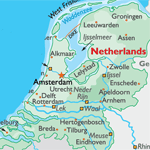 I have been designing stitching cards for over ten years but the origins of the craft go back a long way in history. Card has probably been used as a base material for embroidery since card itself was first produced. In the 1800s sheets of perforated paper became available to needle crafters. This started the Victorian craze for stitching mottoes and sayings on card. Designs were usually worked in long parallel stitches to form areas of colour.
I have been designing stitching cards for over ten years but the origins of the craft go back a long way in history. Card has probably been used as a base material for embroidery since card itself was first produced. In the 1800s sheets of perforated paper became available to needle crafters. This started the Victorian craze for stitching mottoes and sayings on card. Designs were usually worked in long parallel stitches to form areas of colour.
Today’s card embroidery designs are typically worked in long crossing stitches that form geometric shapes. In the early 1990s Dutch designer Erica Fortgens started writing books with instructions and patterns for making stitching cards using geometric shapes.
In the forward to her book “Embroidery on Paper” Erica Fortgens tells how she got started. She made forty small dinner cards with gold embroidery for a birthday party. The cards turned out to be very popular and she continued to make more embroidery patterns. Erica produced a number of books on the craft of “Borduren op Papier” in Dutch and published in the Netherlands. When they were later translated into English the craft was called Embroidery on Paper.
Prick and stitch kits were marketed in Holland by thread and wool manufacturer Madeira during the early 1990s. Their trade name was Pickpoints and the instructions were in Dutch.
In 1997 I helped develop stitching kits with English instructions for Card Inspirations. These were marketed under the trade name of Form-A-Lines. The Form-A-Lines collection has grown over the years and there are now dozens of prick and stitch kits to choose from.
I launched the Stitching Cards web site in 2004 with patterns available as downloads directly to your computer. There are now over 200 patterns in the Stitching Cards range.
When did you first start making prick and stitch cards? If you have been making them for years let me know by adding a comment to this post.

Comments are closed.